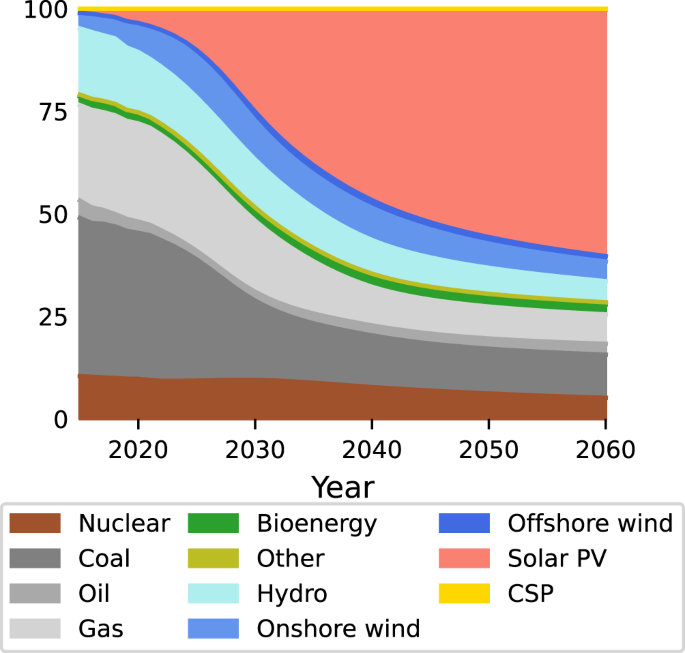The Rise of Solar Energy: Overcoming Barriers to a Renewable Future
The momentum of the solar energy transition - Nature Communications 🔗

Solar energy is positioned to become the dominant energy source by mid-century, driven by declining costs and increasing investments. A tipping point in solar adoption may have already been reached, allowing it to outpace fossil fuels without further policy intervention. However, challenges remain, including grid stability, financial access in developing regions, supply chain capacities, and political resistance from areas reliant on fossil fuel jobs. Addressing these barriers through innovative policies, rather than traditional carbon pricing, could facilitate a smoother transition to a renewable energy system.
- Global decarbonization targets necessitate widespread adoption of zero-carbon energy sources by 2050-2060.
- Solar energy is becoming economically attractive, with costs significantly dropping and capacity growing rapidly.
- A tipping point in solar energy adoption may have been reached, leading to potential dominance in electricity markets.
- Key barriers to further adoption include grid resilience, financial disparities, supply chain challenges, and political resistance.
- Policies focusing on overcoming these barriers may be more effective than traditional financial incentives.
What is the primary energy source projected to dominate by mid-century?
Solar energy is projected to become the dominant energy source due to its declining costs and increasing investment.
What are the main barriers to solar energy adoption?
The main barriers include grid stability, access to finance in developing economies, supply chain readiness, and political resistance from fossil fuel-dependent regions.
How can the transition to solar energy be accelerated?
Addressing barriers through innovative policy measures, rather than relying solely on carbon pricing, may facilitate a faster transition to renewable energy systems.